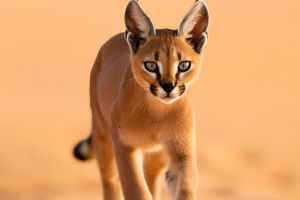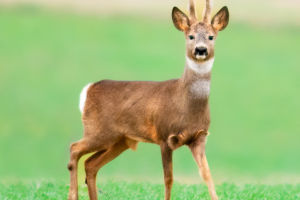The fennec fox is a small fox that inhabits the desert regions of Africa.
Renowned for their oversized ears and remarkable adaptability to extreme environments, they are often referred to as the "elves of the desert."
This charming animal captivates many with its distinctive appearance and plays a crucial role in the desert ecosystem due to its unique survival strategies and behavioral habits.
One of the most striking features of fennec foxes is their large ears. These ears serve not only to enhance their hearing but also to regulate their body temperature. The ears are rich in blood vessels, which help dissipate heat by increasing blood flow to the surface.
Given the extreme heat of the desert during the day, the fennec foxes rely on their large ears to release excess heat into the air, thereby stabilizing their body temperature.
Additionally, these large ears improve their hearing, enabling them to detect faint sounds in the desert, such as the movement of small rodents, which increases their chances of successfully capturing prey.
Fennec foxes are relatively small, with body lengths ranging from 24 to 41 centimeters and tails that can reach up to 30 centimeters. They typically weigh between 1 and 1.5 kilograms. Their fur is predominantly light yellow or sandy, providing effective camouflage in their desert habitat.
The fur reflects sunlight and insulates against the cold temperatures that occur at night. The drastic temperature fluctuations between day and night in the desert necessitate this adaptive fur, allowing the fennec fox to endure extreme conditions.
As nocturnal creatures, fennec foxes are primarily active at night. During the day, they rest in underground burrows, where they usually dig themselves to a depth of 1.5 to 3 meters. These burrows not only offer refuge from the heat but also protect the foxes from predators.
Often, fennec foxes create multiple resting areas at different levels within their burrows, enabling them to select the most comfortable location based on their needs.
Access to drinking water is not a significant concern for fennec foxes. They primarily obtain the moisture they need from their food. Their diet is diverse, including insects, small mammals, reptiles, and even plant roots and fruits.
During dry periods when food is scarce, fennec foxes utilize their keen sense of smell to locate underground water sources or stored food.
Reproductive behavior is a vital aspect of the fennec fox's survival strategy. Typically, their breeding season coincides with the wettest period in the desert, ensuring a more favorable environment for the newborn cubs.
Female fennec foxes usually give birth to 2 to 5 cubs, who are entirely dependent on their mother for the first few weeks of life. The mother provides ample food until the cubs are capable of foraging independently.
Fennec foxes are known for their strong family bonds, with males actively participating in caring for their young and protecting their territory during the breeding season.
Despite their remarkable adaptability, fennec foxes face several threats. Desertification, habitat loss, and the illegal pet trade are significant dangers to their survival. Protecting the fennec fox and its habitat is an urgent task.
Through international cooperation and conservation efforts, these little desert elves can be safeguarded and allowed to thrive in their natural environment.
The fennec fox, with its unique appearance and adaptability, has become an integral part of the desert ecosystem. Not only are they fascinating creatures in their own right, but they also serve as important subjects for studying desert ecosystems.
Ensuring the protection of fennec foxes and their habitats is crucial for maintaining the ecological balance and biodiversity of the desert.


